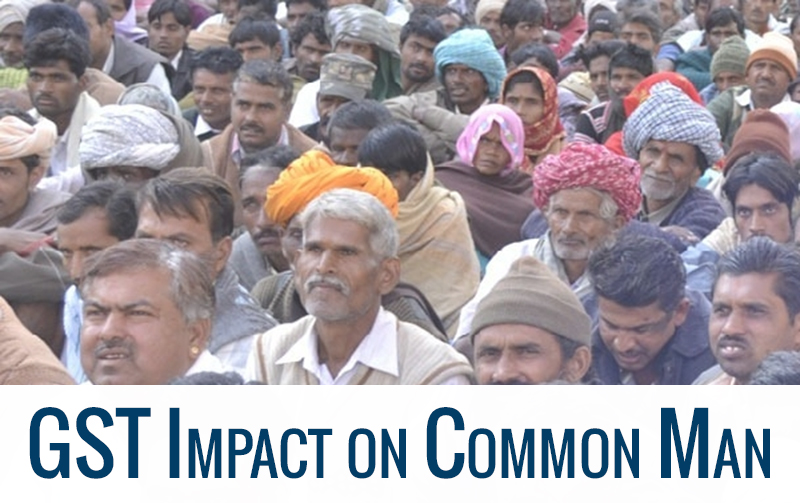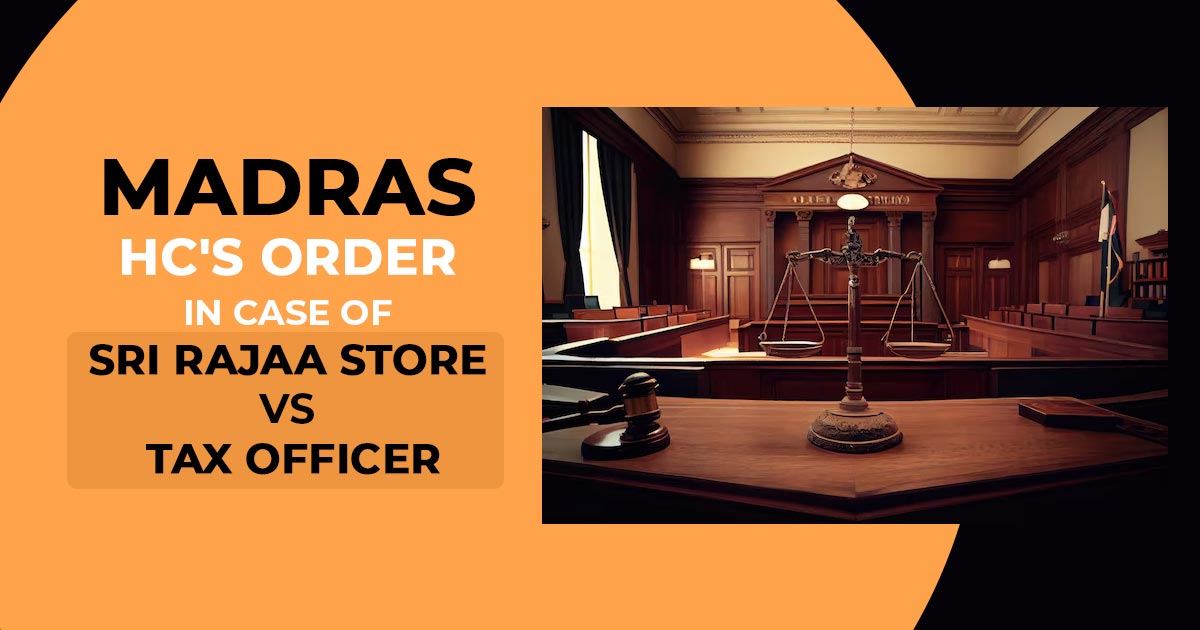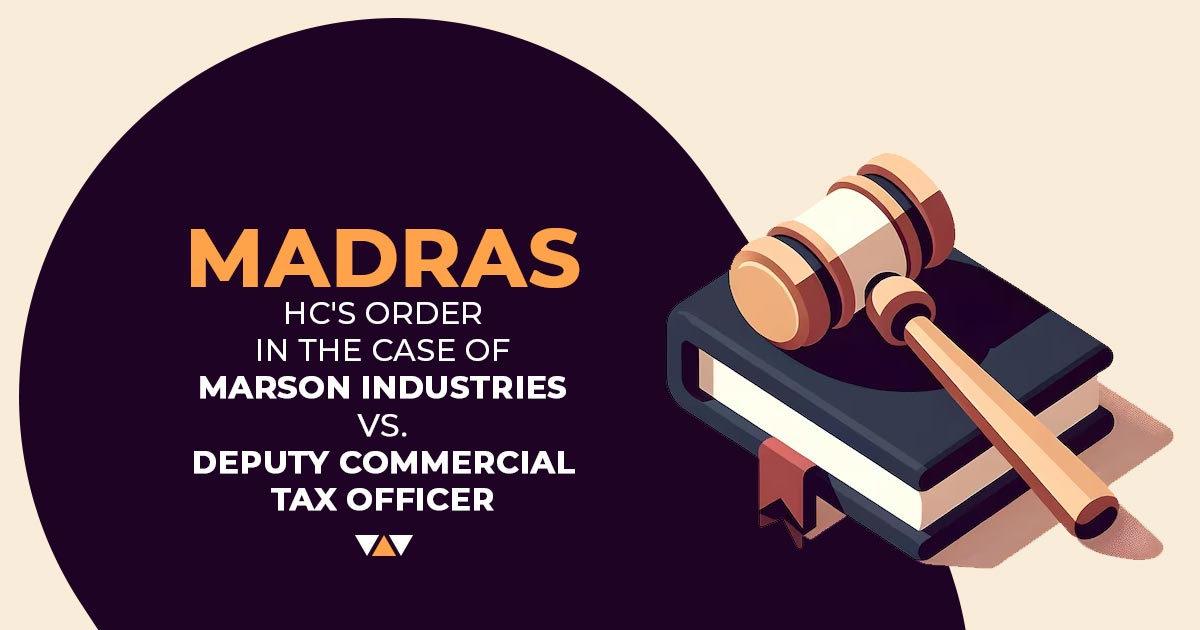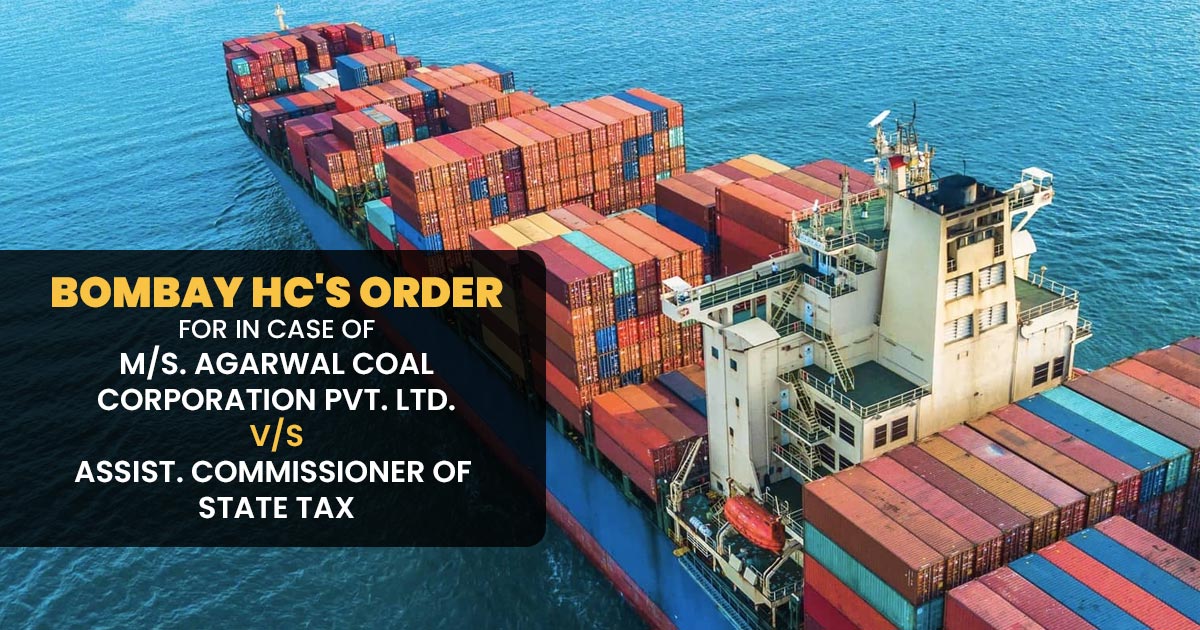Here in India, the maximum population is of the middle class and lower middle class where people either belong to the service class or they depend on agriculture for their living. In this scenario, the most important question is what is the impact of GST on common man or a middle-class family. There are lots of questions in the mind of a common man in these days such as: Is there anything new for him or it’s like an old material in a new package? Is there any tax relaxation for him in new tax provisions or it will increase the prices of goods and services for him?
47th GST Council Update
In the 47th GST council meeting, make changes in the GST rate on goods and services made by GoM rationalization. It has been applied to various items such as daily household, kitchen appliances, and transport/services which are directly impacted by a common man’s budget. These GST rate changes are recommended by the council. Read PDF
Latest Update in Common Man
28th December 2021
- The Indian government has revised five major rules that impact the common man life from 1st January 2022. The modifications are related to LPG cylinder prices, charges on new ATM cash withdrawals, India Post Payments Bank (IPPB) deposit/withdrawal, cash transaction and ICICI bank service.
After GST, there is a single tax provision in the supply chain where each person is able to take tax benefit of all the taxes which he already paid and eventually the prices become low. As well as he came to know that how much tax he has paid on goods and what is the actual value of his goods. Again there is a better tax administration facility in GST so manipulation in taxes is not possible. GST has a wider scope so it will cover a maximum number of the assessee at each stage tax benefit will generate and at the end consumers get the benefit for this.
For the general public, the actual impact of any economy is when the prices of their necessity become affected. For the public in large when prices become low for the day-to-day goods and services that are consumed, the economy is good otherwise if the inflation rate is higher, then the public gets unsatisfied with the changes done by the government.
For any government policy, it is important that the satisfaction in public should be there as without satisfaction the policy will not succeed in the same way in which the government planned.
Here we are trying to understand the new GST from the current taxation system of India. In the previous tax regime, we pay indirect tax on each and every service which we consume which is already taxed at a different point of time.
Sometimes we pay the taxes on tax amount too which is called cascading effect. The result is that the burden of the increased price is afforded by the end consumer only and he doesn’t know that how much tax he paid and what is the actual cost of the material. According to the news sources, there is a slight impact on the consumers after the GST got implemented. Let’s see common areas where the general public deals every day:
Let’s Take Some Everyday Examples to Consider the Impact of GST:
Household Expense
- In GST, the food items are under zero to 5 percent tax rate which will not directly impact on the food prices.
- Cosmetic services like salon and beauty services are known to become expensive with an increased 3% GST rate upon them along with no benefit on input tax credit on such services.
- Daily household items cost have enhanced due to the implementation of the Goods and Services Tax (GST) regime. Nearly 54 percent of people of the country are complaining that the new indirect tax regime implementation has enhanced the daily household expenses, as this influencing the common people in the country. The figures came out after a survey has organized by the Citizen Portal is connected to the Central Government Consumer Affairs Department. Almost more than 40,000 applicants had participated in the survey and answered the different questions relating to the new tax regime. It has been several months since GST was implemented across the country, one in every two people considers that the new tax regime has enhanced the cost of the house
- Several questions and complaints relating to the new tax regime had been asked by the State Finance Ministers in 21st GST Council Meeting held in Hyderabad. A survey organized by the Local Circle of Consumer Affairs, the Local Circle nearly 54 percent of the people believed that the GST implementation has enhanced the expenses of the household of the month nearly by 30 per cent
- About half of the people who participated in the survey considered that post GST implementation has also increased the medical expenses of the month. Besides, consumers are complaining that the business entities are charging GST above MRP, as well as forcing to pay the bill in cash and denying to mention the GST in the bill
- Considering the issues faced by the State Governments under GST, the GST Council has extended the deadlines for filing Sales Returns or GSTR- 1. In 21st GST Council Meeting, the government has reduced the tax rates on 30 items.
- Again in 22nd and 25th council meeting Government has reduced GST rates of various items including household items thereby benefitting the common man to some extent.
- With effect from Nov 10, 2017, some items such as Condensed milk, Refined sugar and sugar cubes, Pasta, Curry paste, mayonnaise, and salad dressings, mixed condiments and mixed seasoning, Diabetic food, etc. get some price cut because it brought under 12% from 18% bracket (As per the recommendation of 23rd GST Council meeting on Nov 10, 2017).
- With effect from Jan 18, 2018, few more items like Sugar boiled confectionery, 20 liters drinking water packed bottles, etc. also get cheaper due to the shift from 18% to 12% slab.
Car prices
- With the inclusion of GST, some car prices got a healthy rate cut whereas some get costlier. many companies have revised the prices of the car models.
- Now, 28% of the rate of GST will be attracted to the purchase of the car with an additional cess between 1% and 15%.
- Cars with Diesel engines of less than 1,500 cc will attract 3% cess.
- Small cars with petrol engines less than 1200 cc will attract 1% cess.
- Big cars and SUVs with length over 4 meters will attract GST of 28% along with 15% cess.
- On electric vehicles, 12% of GST will be imposed.
Rented Property
- There is some good news for those who are staying in a rented house, after GST there is no service tax is levied on residential properties.
- However, if the properties are rented for commercial uses such as for shops, offices, and industrial purposes then it would attract 18% GST.
Apparels and Footwear
- The government has set a 12 per cent GST (Goods and Services Tax) rate on apparel and footwear effect from 1st January 2022. read more
Real Estate
- If a customer buys under-construction property for INR 1 crore, there will be different cases.
- Previously, it was around 5.5 percent VAT and service tax applicable, But under the GST, 12% tax rate applicable to the real estate makes it slightly expensive.
- Well, there will be no changes in the ready to move Apartments with a completion certificate, As they have been kept out of the GST structure.
Taxi Services
- 5 per cent GST levy on auto rides online booking via Ola and Uber e-commerce operators from 1st January 2022
- If a customer takes a taxi service in which the ride costs 100 rupees, then there will be a substantial change in the tax as previously there was around 6% of service tax while in the GST it is now levied at 5% which will be a marginal saving for the customer.
Banking and Insurance services
- Financial Services are now expensive as there has been a 3% extra GST tax rate applicable to them.
Recommended:- Are Restaurants Charging Correct GST Bills? Know the Complete Details
Train Fare
- There is a hike but it will not impact much.
- There is a hike of 0.5% of the price of tickets and the cost of transport. So, the increased price may not even be noticeable depending on the actual price of the ticket.
- Additionally, on railway catering service on railway stations (static) and trains (mobile) GST will be charged at a uniform rate of 5%, including the supplies of foods and drinks made on stations, platforms, and trains.
Hotels
- If in case, a customer books a hotel with a tariff of INR 8000, then the gross and indirect tax rate i.e. service tax, the luxury tax is around 19 to 25% according to the luxury tax rate of the state. Thus, the tax will be calculated around INR 1520 to INR 2000.
- While in the case of GST, there is 28% GST applicable to all the accommodations with a tariff of about INR 7500, which will take the tax calculation at INR 2100. Overall the tax ratio is slightly expensive for expensive hotels. Read more
Air Travels
- In case, a customer books flight tickets Indian in a domestic economy class of INR 1000, then the tax rate is varied in both the cases.
- Previously there was around 6% of service tax applicable in domestic economy class, while in the GST, the economic class is taxable at 5%, which will result in slight savings.
- While talking about the business class, the tax rate in GST has been increased from 9% to 12%, resulting in an expensive business-class tax case.
Jewelry
- After the GST, the tax rate is increased by 1% thus reached from 2% to 3%.
- Investment in gold becomes expensive because now the buyer has to pay 3% GST on gold and 5% on the making charges.
Mobile Bills
- GST has increased the burden of mobile phone users.
- Both the pre-paid and post-paid users have to pay more bills due to an increase in the tax rate by 3%.
Restaurant
- If in case, a customer orders a meal for INR 1000, then there will be substantial savings on the restaurant bill.
- In the earlier tax scheme, there was VAT at the rate of 12.5% and service tax @ 6% totaling at around 18.5%.
- While under the GST, an air-conditioned restaurant will be charged at 18% GST, making it up to minimal cost reduction in the restaurant Bill.
Prices of Petrol Increasing
- Prices of Petrol are significantly increasing in the country even after the steady decline in crude oil prices. The prices of petrol have reached to Rs 80 in Mumbai city. The central government is worrisome about these prices. The Petroleum Minister Dharmendra Pradhan has shown concern on the prices of petroleum and diesel. He said that the GST is an effective way to control the prices of petrol as well as diesel. The GST Council must include petroleum to the new tax regime
- Dharmendra Pradhan said, “We want that petroleum should be brought under GST. Of the State Governments, the Finance Minister has said this, if prices are brought under GST, then prices can be predicted. Due to the huge difference between petrol prices in Mumbai and Delhi, we have demanded that GST should be brought under GST as well. The public will be comfortable.”
For a middle-class family, the main issues are “Roti, Kapda, and Makaan“. Initially, the country is troubling with the new tax regime due to the four slab rate structure under GST. For the long term, the country will be benefited with the new Goods and Service Tax (GST) Regime. The implementation of GST on 1st July shattered the issues related to the cascading effects of tax and has made a clear and partial way of understanding the personal finances.
Positive Impact of GST on the Common Man
- GST was introduced as an integrated tax system, which extracts a bundle of indirect taxes such as CST, VAT, service tax, SAD, CAD, excise, etc.
- Introduction of Goods and Services tax eliminated the cascading effect of taxes i.e. tax on tax.
- GST reduced the burden of taxes from the manufacturing area, thus manufacturing costs will be reduced. Therefore, the prices of consumer goods are also likely to decrease.
- Because of the lower manufacturing cost some products like cars, FMCG, etc. will be a bit cheaper.
- This will help reduce the burden on the common man, who will have to spend less money to buy the same goods/ services which were more expensive earlier.
- Low prices will directly or indirectly increase demand/consumption of goods.
- Increased demand will ultimately enhance supply. Therefore, this will eventually increase the production of goods.
- Boost in production, in the long run, will increase job opportunities. However, this can only happen when consumers actually get goods at cheaper costs.
- This will curb the circulation of black money. It will only be possible when the KACHA or Invalid Bill system, normally followed by traders and shopkeepers will be checked.
- A unified tax system will reduce corruption which will directly or indirectly affect the common man.
- Most importantly, experts expect to see a positive impact of GST on the Indian economy in the long run.
Negative Impact of GST on the Common Man
- Compliance burden: You have to submit GST and file the return on time.
- Filing GST returns is not as easy as it sounds. You must appoint a tax professional to manage it.
- The government is taking steps to make return filing easier and to keep it simple. But, even then, it will take time to actually smoothen the entire process from start to end.
- Large businesses with enough employees can handle the entire process easier. But for small traders/merchants/service providers or individuals who have just started their business or service, it is still complex.
- At the present time service tax at a 15% rate is being charged on services. Therefore, if GST is introduced at a higher rate, which is going to happen in the near future, the cost of services will increase. GST at 18% will be levied on maximum services and will reach 28% for certain services. Which means all services like telecommunications, banking, airline, etc. will become more expensive.
- The higher service tax means increased cost of services, it will be added in Common Person’s monthly expenses.
- To bear the cost of additional services, you will have to reset the budget of the common man.
- Everyone including Businessmen and service providers is still exploring and getting used to new laws. During this time dependence on tax experts and professionals is increasing which results in a bit more business expenses.
- The real implications of GST can be experienced after a certain period.
- GST or Goods and Services Tax is a consumption-based tax, Thus for services, the place where the service is provided needs to be determined.
- For better compliance, proper invoicing and accounting are necessary. However, there are various companies that are developing GST accounting software.
- If the actual benefits are not passed on to the consumer and the seller increases his profit margin, then the prices of the goods may also increase.
- The rise in inflation can be observed initially, however, it may also come down gradually.
- The activities of profiteering will have to be strictly checked so that the end consumer can enjoy the real benefits of GST.











Nice article
good
I am Rajiv Singh. Qualified a master degree since
It will have great impact on Indian common man as it will fix the rate of tax on every transact and will increase the price.
And also maintaining a bank account will cost and will be unhappy news for all the poor people
GST will fuel inflation as the rates will touch 18-22% and the end consumer and Industries exempted under GST will end up bearing the final brunt of the taxes. GST with an Indian touch will work out in ways unforeseen. The benefit is to government as it can monitor end to end compliance.
Someone will come up with an idea of mapping aadhaar to individual dealer accounts and Tax returns and the scope for black money will get reduced as major transactions get mapped more so in relatively unregulated sectors like real estate and agriculture. In inter state GST will benefit the consuming state and leave the manufacturing /supplying state in a relatively disadvantaged position. This could ensure policies by state Governments for encouraging within state sales more than interstate sales.
The law is silent on interstate stock transfers and free supplies and promotional goods offered to consumers. Exemption clauses should take care of that. The indian tendency is to lobby for exemption notifications like those found under Current service taxes by Industry associations and bodies. This would cause a carve out where notifications can be ensured through political lobbying to keep segments out of the GST net. For goods carried out of the country by individual travellers a GST refund voucher scheme has to be put in place to avoid the export of taxes. Come 2017 and one will know how the scheme will play out.